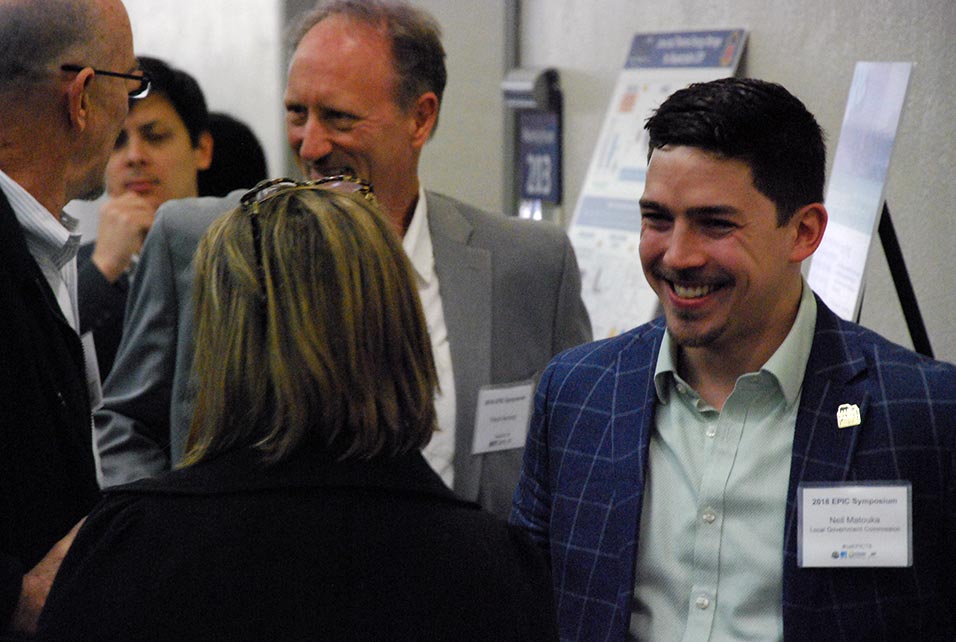Leading experts in energy gathered at the 2018 Annual Electric Program Investment Charge (EPIC) Symposium to showcase groundbreaking technological advancements in clean energy. This year’s symposium was the largest by far, with over 600 participants made up of utilities, cleantech researchers, entrepreneurs, and businesses from all across California.
Recap of the 2018 EPIC Symposium

Leading experts in energy gathered at the 2018 Annual Electric Program Investment Charge (EPIC) Symposium to showcase groundbreaking technological advancements in clean energy.
Hosted by the California Energy Commission, Pacific Gas & Energy, Southern California Edison Company, and San Diego Gas & Electric Company, the annual symposium highlighted current EPIC-funded research and innovations as a way to kickoff the Energy Commission’s strategy for allocating EPIC funds going forward. The EPIC program provides over $160 million in funding each year to clean energy research and innovations. This year’s symposium was the largest by far, with over 600 participants made up of utilities, cleantech researchers, entrepreneurs, and businesses from all across California.
Senator Nancy Skinner kicked off the program with a morning keynote address, stressing the need for continued research and development in energy storage technologies in order to foster improvements in renewable energy resources and energy efficiency upgrades. The keynote was followed by a fireside chat led by Matt Petersen of LA Cleantech Incubator, with expert panelists who discussed the need to transform California’s power system. Dr. Ilan Gur, founder of Cyclotron Road, highlighted the need to close the existing gap in supporting cleantech innovation through venture capital and commercial markets.
The program also included three main breakout sessions where experts discussed topics such as Improving Power System Resilience for Disaster Recovery, and Energy Technology Solutions for Food Production. In one session, a panel on Scaling-Up Clean Energy Solutions for Low-Income Customers, presenters discussed the need to bring energy efficiency and distributed energy resources to low-income communities. Stephanie Chen of Greenlining Institute, for example, stressed the need for programs for low-income and disadvantaged communities to focus less on cost-effectiveness and more on providing impactful benefits.
Local Government Commission Newsletters
Livable Places Update
CURRENTS Newsletter
CivicSpark™ Newsletter
LGC Newsletters
Keep up to date with LGC’s newsletters!
Livable Places Update – April
April’s article: Microtransit: Right-Sizing Transportation to Improve Community Mobility
Currents: Spring 2019
Currents provides readers with current information on energy issues affecting local governments in California.
CivicSpark Newsletter – March
This monthly CivicSpark newsletter features updates on CivicSpark projects and highlights.



